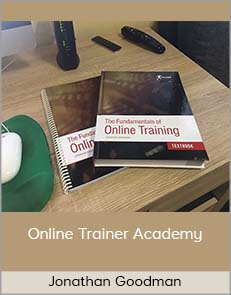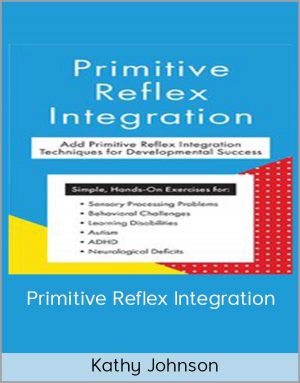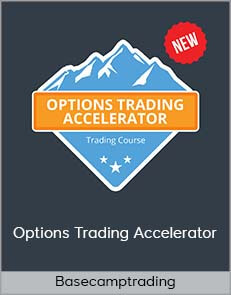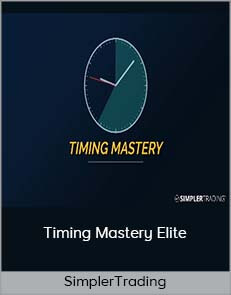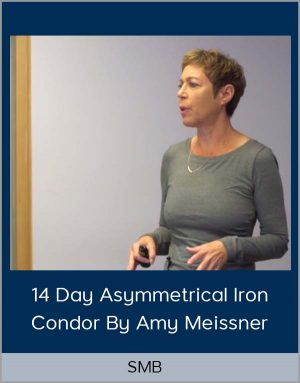Advanced AmiBroker Coding
$60.00$1,500.00 (-96%)
Several group discussions, you will work with AmiBroker during this practice time
Advanced AmiBroker Coding
Check it out: Advanced AmiBroker Coding
Are you a trader who wants to learn advanced AmiBroker programming skills to improve trading results?
You already know that AmiBroker is an extremely powerful tool for performing technical analysis. At Connors Research, we use the application, from simple signal generation to complex strategies for simulating portfolio results (including limit orders, calibration, hedging, etc.). If you plan to solve these advanced analysis tasks yourself, this course is for you.
Sign up for our 2 day course
From June 9 to 10, Connors Research research director Matt Radtke taught the same AmiBroker programming technology that Connors Research used to create and build high-performance strategies. At the end of this course, you will be able to perform your own advanced tests and analysis, many professional traders can rely on these tests and analysis to improve their trading and return on investment.
By using all the functions of AmiBroker, you can simulate the historical results of a system, which can accurately reflect your trading methods, so as to gain an in-depth understanding of its future performance. In this course, we will teach you the exact operation method.
Course objectives
This course is designed for traders who want to use AmiBroker to create complex backtests and optimizations using a custom backtester (CBT) interface. After completing this course, you will be able to:
Determine when to use each of the three levels of Custom Backtester. Within minutes, you can customize any system that suits your personal trading style, mental state, and risk preferences. Understand the details of system development to build your private trading system. You will learn how to customize your position size, hedging strategy, your trading timing and your own expansion strategy.
Add custom indicators through custom Backtester. Enrich more robust trading results so that you can use customer indicators such as “trade quality” to compare different trading systems. Integrate annual transaction breakdowns or earnings annual breakdowns into your results. Verify that your system will run steadily month after month, year after year, and remain stable in good and difficult years.
Develop your own trading model from scratch so that you can evaluate the performance of your ideas under historical trading conditions.
Use some of AB’s more powerful features. Now you can perfect and improve the existing trading system to reduce risks and improve performance.
Perform the correct optimization. Avoid the “over-optimization” trap and develop historically verified enhancements for your trading system.
Use multiple time frames, for example, use weekly bars in daily bar tests. By trading with short-term and long-term time frames to further improve the accuracy of the system.
Zoom to position. Build a proprietary amplification method that is the same as Connors Research’s best strategy into your trading system.
Consider investment portfolio considerations when coding. Consider the overall performance of the portfolio and find ways to improve the performance of multiple positions in the portfolio.
What is included
Matt Radtke provided more than seven hours of online guidance.
Several group discussions, you will work with AmiBroker during this practice time
You can easily modify the AFL and CBT code templates according to your needs.
prerequisites
AmiBroker version 5.5 or higher has been installed.
Configured as a data source that can be used with AmiBroker (if necessary, we can help you before the class).
Basic understanding of the topics covered in the AFL and “Introduction to AmiBroker” courses.
theme
Introduction
AmiBroker is a very powerful analysis tool. Like any powerful tool, it also requires training and practice to be used effectively. In today ’s course, we will delve into some of the most powerful features of AmiBroker, including portfolio backtesting, optimization, and custom backtester interface or CBT.
Advanced features
AmiBroker’s AFL scripting language provides a variety of variables, commands and functions that can be used to develop custom indicators, scan, explore, backtest and explore. In fact, the AFL help file lists more than 350 AFL features. In this section, we will discuss some of the most useful features when starting to develop more advanced AFL scripts.
status
look up
_track()
SetTradeDelays
Foreign / foreign
optimization
Through optimization, you can automatically perform a set of backtests, where each test has a unique set of input parameters. Each test (parameter combination) usually corresponds to a specific strategy variant. For example, we may want to test a strategy where the ConnorsRSI trade entry threshold varies between 10 and 25 (in increments of 5). In this section, we will discuss how to convert AFL for backward testing to optimization.
How to set
Optimization function
Use switch functions to handle odd increments
TimeFrame compression / expansion and setting / recovery
When running backtests, AmiBroker allows you to choose a basic duration for each “bar” of the test. This is also called a timetable. You can test 1-minute bars, daily bars, weekly bars, etc. However, sometimes you want to use multiple time ranges in one test. For example, some of our strategies use market timing rules to compare SPY’s current weekly closing price with the weekly closing price of the past year. In this section, we will explain how to use the AFL function to manipulate the time range.
Functions: TimeFrameCompress, TimeFrameExpand, TimeFrameSet, TimeFrameRestore
How to use the weekly bar in the daily bar test
Easily set week / month / quarter end variables
View TimeFrame code example
Scale and position size array
Expansion trading is a powerful tool for increasing revenue. In this section, we will discuss how to implement a basic scaling strategy for “all industries” testing.
2/3/5 scale
View extension code template
Average entry price
Explain trade list
Exercise: Create all industry tests with scaling
This hands-on exercise will be used exclusively to execute extended code templates and verify that the strategy logic works as expected.
Portfolio considerations
Compared to just generating trading signals or conducting an “all trading” test, the simulation strategy is actually a big step in how to trade as part of a portfolio. In this section, we will discuss fund management issues, such as position size and margin, and mechanisms, such as prioritizing trading signals and limiting the number of open positions.
Highest position
SetPositionSize
Whole hand size
Ranking score
margin
Introduction to CBT
Customizing the Backtester interface or CBT is one of the most powerful tools available in AmiBroker. Writing your own backtesting code can give you a lot of control over how trading signals are executed and provides countless possibilities for reports and indicators. In this section, we will introduce CBT and discuss the simplest implementation of the custom backtest process.
Why is it useful?
Three levels: high / medium / low
CBT specific functions: SetBacktestMode and SetCustomBacktestProc
Static variable
View advanced CBT code templates
Advanced CBT and custom indicators
Using advanced CBT is a good way to implement custom indicators without having to deal with the complexity of processing all trading signals. In this section, we will discuss custom indicators and summary custom indicators for each transaction, and explain how to implement these indicators using code templates.
Customs trade indicators
Custom portfolio / summary indicators
View trading indicator code templates
View portfolio indicator code templates
Exercise: Use code templates to generate custom indicators
This exercise will provide you with practical experience to implement, execute and solve custom indicators.
Low level CBT
Low-level CBT is the preferred interface for Connors Research members to implement backtesting and optimization. We will discuss the types of problems that can be solved using this structure, especially in the case of portfolio testing, and explain the solution with sample code.
Task types that usually require low-level CBT
Apply a custom interest rate (such as T-Bill) to available cash
Limited and / or enlarged portfolio testing
Control the order of entry and exit
Rotating system
Hedging
View low-level CBT code templates
Exercise: Use restricted entries to implement portfolio testing
In this exercise, students will use the provided code template to implement their portfolio test by restricting entries. This small project will combine many skills used throughout the course.
Common mistakes
The higher the functionality and flexibility provided by the tool to the user, the greater the chance of problems. In this section, we will discuss some common pitfalls when using AmiBroker for portfolio testing. As a colleague said: “If the result looks too good to be correct, I may make mistakes.”
Trading timing
Looking to the future
Implement trading rules that cannot be enforced in real life
Other sources and Q & A
Estimated total time: 7-8 hours
This course is aimed at experienced AmiBroker programmers who want to learn advanced programming skills to improve trading results.
Sign up now
The cost of “Advanced AmiBroker Programming” is $ 1500. The course is available on demand. You will get a two-day guide and advanced knowledge on how to backtest your strategy and knowledge on how to best use CBT.
*** The entry class in AmiBroker programming is available. ***
Special Price: If you want to join both the introductory and advanced AmiBroker courses, you can enjoy a special price of $ 2,000 (save $ 500)
Advanced AmiBroker encoding
Class Date: On-demand
Price: USD 1,500
If you have any questions, please call us directly
888-484-8220 ext. 3 am EST, 9 pm to 5 pm,
(Or 973-494-7311 ext. 3 outside the US)
About the class teacher
Matt Radek
Matt Radtke is a senior researcher at Connors Research. Mr. Radtke received a computer science degree from Michigan State University with outstanding results. He has 25 years of software development experience in large and small companies, including HP and Bell Northern Research. Mr. Radtke has been actively trading stocks, ETFs and options since 2008. In the past few years, he began to participate more and more in the activities of the Connors Group family, first of all students, then members of the chairman’s club, and finally consultants, researchers and authors.
About Connors Research
Over the past 12 years, Connors Research has provided high-quality, data-based transaction research to individual investors, hedge funds, proprietary trading companies, and bank trading departments worldwide.
The strategy released by Connors Research is:
Conners Research is completely original
You won’t find these strategies anywhere else.
Consistent with the strategy used by billion-dollar hedge funds
Institutional financial managers make decisions based on complex computer analysis of large amounts of transaction data.
All types of markets that have been proven over many years of history
We quantify accurate models to improve your trading decisions. Our proprietary database spans two decades, with more than 12 million quantitative transactions.
Over the years, tens of thousands of traders have relied on our research
From the best-selling books (such as “How the market really works”) to our PowerRatings subscription service, Connors Research continues to provide tools for active traders to achieve professional-level results.


